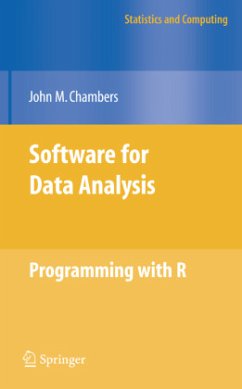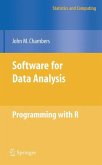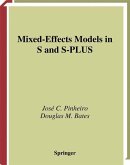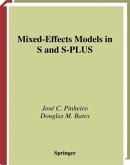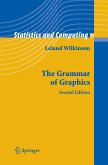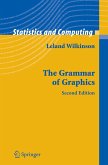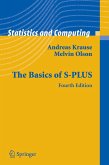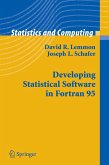John Chambers has been the principal designer of the S language since its beginning, and in 1999 received the ACM System Software award for S, the only statistical software to receive this award. He is author or coauthor of the landmark books on S.
Now he turns to R, the enormously successful open-source system based on the S language. R's international support and the thousands of packages and other contributions have made it the standard for statistical computing in research and teaching.
This book guides the reader through programming with R, beginning with simple interactive use and progressing by gradual stages, starting with simple functions. More advanced programming techniques can be added as needed, allowing users to grow into software contributors, benefiting their careers and the community. R packages provide a powerful mechanism for contributions to be organized and communicated.
The techniques covered include such modern programming enhancements as classes and methods, namespaces, and interfaces to spreadsheets or data bases, as well as computations for data visualization, numerical methods, and the use of text data.
Now he turns to R, the enormously successful open-source system based on the S language. R's international support and the thousands of packages and other contributions have made it the standard for statistical computing in research and teaching.
This book guides the reader through programming with R, beginning with simple interactive use and progressing by gradual stages, starting with simple functions. More advanced programming techniques can be added as needed, allowing users to grow into software contributors, benefiting their careers and the community. R packages provide a powerful mechanism for contributions to be organized and communicated.
The techniques covered include such modern programming enhancements as classes and methods, namespaces, and interfaces to spreadsheets or data bases, as well as computations for data visualization, numerical methods, and the use of text data.
From the reviews:
"R is nowadays the language used in programming for statistics. Most of the thesis and practical programming are implemented in this language. This is a valuable book for every body involved in data analysis, not only statisticians. Being written by the father of S programming language, as R is S based, the development of the presentation as well as the advises are good for fitting the minds of the students within the roots of the art of programming with R."
(J. Scheneweiss, Revista Investigación Operacional, Vol. 30 (2), 2009)
"...Written by one of the developers of R's predecessor, S, the book's aim...is to take the reader 'from user to programmer to contributor' in R. ...It is written in plain, clear English. The necessary terminology that is specific to R is defined over the course of the book and is easy to locate should a reader not start from the beginning. The author has attempted to keep chapters somewhat independent so that not starting from the beginning is an option for more advanced R users who are in need of a reference rather than a tutorial. There are two special indexes, separate from the main index, covering 'R Functions and Documentation' and 'R Classes and Types.'...I would expect that this book will find a home on a great many bookshelves. ..."
(Biometrics 65, 1313, December 2009)
"...This is a book that will appeal to readers of diverse backgrounds. For R users it has a wealth of information on learning to use R effectively; from efficient and reliable programming to writing packages. It is an authoritative reference for programmers and developers. It is the type of book that will be referenced often, as the reader's experience with R, level of expertise and interest in programming grows."
( The American Statistician, August 2009, Vol. 63, No. 3)
"This text is about using computer software, in particular R, for obtaining information from the data ... . 'is aimed at those who need to select, modify, and create software to explore data, in other words, to program.' ... The book is aimed at (i) data analysts, namely anyone involved in exploring data, from data arising in scientific research to, say, data collected by the tax office; (ii) researchers in, and teachers of, statistical techniques and theory; (iii) those primarily interested in software and programming."
(Susan R. Wilson, Zentralblatt MATH, Vol. 1180, 2010)
"R is nowadays the language used in programming for statistics. Most of the thesis and practical programming are implemented in this language. This is a valuable book for every body involved in data analysis, not only statisticians. Being written by the father of S programming language, as R is S based, the development of the presentation as well as the advises are good for fitting the minds of the students within the roots of the art of programming with R."
(J. Scheneweiss, Revista Investigación Operacional, Vol. 30 (2), 2009)
"...Written by one of the developers of R's predecessor, S, the book's aim...is to take the reader 'from user to programmer to contributor' in R. ...It is written in plain, clear English. The necessary terminology that is specific to R is defined over the course of the book and is easy to locate should a reader not start from the beginning. The author has attempted to keep chapters somewhat independent so that not starting from the beginning is an option for more advanced R users who are in need of a reference rather than a tutorial. There are two special indexes, separate from the main index, covering 'R Functions and Documentation' and 'R Classes and Types.'...I would expect that this book will find a home on a great many bookshelves. ..."
(Biometrics 65, 1313, December 2009)
"...This is a book that will appeal to readers of diverse backgrounds. For R users it has a wealth of information on learning to use R effectively; from efficient and reliable programming to writing packages. It is an authoritative reference for programmers and developers. It is the type of book that will be referenced often, as the reader's experience with R, level of expertise and interest in programming grows."
( The American Statistician, August 2009, Vol. 63, No. 3)
"This text is about using computer software, in particular R, for obtaining information from the data ... . 'is aimed at those who need to select, modify, and create software to explore data, in other words, to program.' ... The book is aimed at (i) data analysts, namely anyone involved in exploring data, from data arising in scientific research to, say, data collected by the tax office; (ii) researchers in, and teachers of, statistical techniques and theory; (iii) those primarily interested in software and programming."
(Susan R. Wilson, Zentralblatt MATH, Vol. 1180, 2010)

